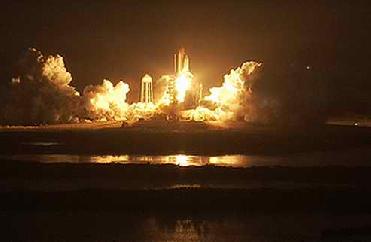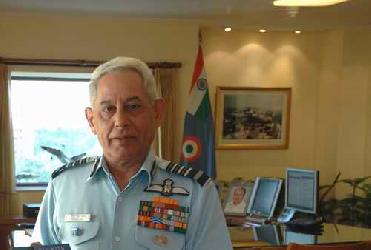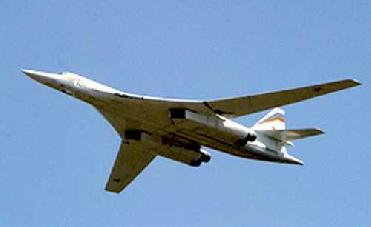
Space shuttle Discovery blazes into the night sky as it lifts off Launch Pad 39A at NASA's Kennedy Space Center in Florida. Photo credit: NASA TV
WASHINGTON (BNS): After a lot of postponements, Space Shuttle Discovery and its seven-member crew lifted off from NASA’s Kennedy Space Center at 7:43 p.m. EDT on Sunday to deliver the final set of power-generating solar array wings and a new crew member to the International Space Station.
Shortly before launch, Commander Lee Archambault thanked the teams that helped make the launch possible. “It’s truly an honour to be part of this team representing NASA, the nation and the international partners. See you in a couple of weeks,” Archambault said.
On the STS 119, apart from Archambault, other crew members are Pilot Tony Antonelli and Mission Specialists Joseph Acaba, Steve Swanson, Richard Arnold, John Phillips and Japan Aerospace Exploration Agency astronaut Koichi Wakata. Wakata will replace space station crew member Sandra Magnus, who has been aboard the station for more than four months. The Japanese astronaut will return to Earth during the next station shuttle mission, STS-127, targetted for launch in June this year.
Former science teachers Acaba and Arnold are now fully-trained NASA astronauts and are making their first journey to orbit on the mission and will step outside the station to conduct critical spacewalking tasks.
NASA mission managers said that Discovery’s STS-119 flight is carrying the space station’s fourth and final set of solar array wings, completing the station’s truss, or backbone. The arrays will provide the electricity to fully power science experiments and support the station’s expanded crew of six in May. The 13-day mission will feature three spacewalks to help install the S6 truss segment to the starboard, or right, side of the station and deploy its solar arrays. The flight also will replace a failed unit for a system that converts urine to potable water.
Discovery’s launch was postponed on Wednesday last, after a leak associated with the gaseous hydrogen venting system was detected during fuelling. Technicians rebuilt and replaced seals and other components associated with the system. No leaks were detected during the Sunday’s fuelling, NASA said.
 Previous Article
Previous Article Next Article
Next Article













The Indian Air Force, in its flight trials evaluation report submitted before the Defence Ministry l..
view articleAn insight into the Medium Multi-Role Combat Aircraft competition...
view articleSky enthusiasts can now spot the International Space Station (ISS) commanded by Indian-American astr..
view article